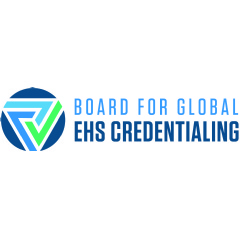Protecting Lone Workers from Occupational Health and Safety Hazards
The Board for Global EHS Credentialing® (BGC®) reminds employers and employees of the importance and unique challenges of protecting lone workers from occupational health and safety risks.
It’s important to remember that there are countless health and safety challenges that may regularly or only rarely present themselves depending on the job, work location, and numerous of other factors.
Millions of workers across the globe are in occupations where they may be considered a lone worker during part, most, or all of their work day. These occupations may include everything from security officers, delivery drivers, social workers, custodians, and convenience store clerks to construction and shipyard workers to name just a few of the countless professions where workers may go without direct contact with coworkers or supervisors for significant periods of time.
Lone workers in some occupations work outside of normal business hours or could be permanently stationed in a facility or location that includes no other workers. For many others, being alone is simply a regular component of their work day away from a base facility and coworkers. While some lone worker occupations are inherently more risky than others, even low risk professions can quickly become hazardous in some circumstances.
The Canadian Centre for Occupational Health and Safety (CCOHS) provides information and guidelines regarding lone workers. The agency provides the following general steps that can be taken to help safeguard these employees:
- Assess the hazards of the workplace.
- Talk to employees about their work. Get their input about the work they do and possible solutions.
- Investigate incidents at the workplace, and learn from incidents in similar workplaces.
- Avoid having a lone worker whenever possible, especially for jobs with a recognized risk.
- Take corrective action to prevent or minimize the potential risks of working alone.
- Provide appropriate training and education.
- Report all situations, incidents or ’near misses’ where being alone increased the severity of the situation. Analyze this information and make changes to company policy where necessary.
- Establish a check-in procedure. Make sure that regular contact is kept with all employees. Establish ways to account for people (visually or verbally) while they are working.
- Schedule higher risk tasks to be done during normal business hours, or when another worker capable of helping in an emergency is present.
“The steps provided by the CCOHS offer a good starting point for things companies and institutions should consider for lone worker positions,” said Dirk Yamamoto, PhD, CIH® and Chair of the Board for Global EHS Credentialing. “It’s important to remember that there are countless health and safety challenges that may regularly or only rarely present themselves depending on the job, work location, and numerous of other factors. Regardless of whether an employer has employees that are surrounded by coworkers or works alone, they are responsible for protecting that worker.”
Dedicated to preventing workplace injuries, illnesses, and deaths of all types of workers are Certified Industrial Hygienists (CIHs). These professionals are trained and experienced in identifying workplace hazards by anticipating, recognizing, evaluating, and controlling a wide range of chemical, physical, biological, and ergonomic stressors. Health risk analysis, hazard communication, work environments, and industrial processes are all key components of the CIH® program. This comprehensive knowledge base can help employers protect both lone workers and those who work with others.
About the Board for Global EHS Credentialing® (BGC®) and Its Credentials and Designations
Founded in 1960, the Board for Global EHS Credentialing’s mission is to be the leader in offering credentials that elevate the technical and ethical standards for professionals practicing the science of protecting, managing, and enhancing the health and safety of people and the environment. The American Board of Industrial Hygiene® (ABIH®) and the Institute of Professional Environmental Practice® (IPEP®) are credentialing divisions of the BGC, offering the Certified Industrial Hygienist® (CIH®) credential, Qualified Environmental Professional® (QEP®) credential, and the Environmental Professional In-Training® (EPI®) designation.
Currently, more than 7,600 people around the world hold the CIH credential, QEP credential, or EPI designation. To locate a CIH to perform industrial hygiene services, please email a request to Info@EHSCredentialing.org . To learn more about a BGC credential or designation, please visit www.EHSCredentialing.org, email Info@EHSCredentialing.org or call (517) 321-2638.
( Press Release Image: https://photos.webwire.com/prmedia/12710/244288/244288-1.jpg )
WebWireID244288
- Contact Information
- Paul Cochrane
- President
- Cochrane & Associates, LLC
- Contact via E-mail
This news content may be integrated into any legitimate news gathering and publishing effort. Linking is permitted.
News Release Distribution and Press Release Distribution Services Provided by WebWire.
